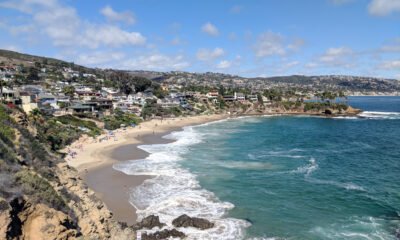This coastal corner of the UK offers ‘something special’ with cute towns and villages, incredible landscapes, and spots that almost redefine the word beauty
August may be drawing to an end but with an Indian summer forecast for many parts of the UK in September, there’s still plenty of time to enjoy the sunshine we’ve so far been blessed with in 2025.
Wales and its breathtaking coastline offer an abundance of beautiful places to soak up the sun. The western hotspots of Pembrokeshire and Carmarthenshire are well-known, but a little further north you’ll find the lesser-trodden Ceredigion is equally worthy of your attention.
“It has a little bit of everything – cute towns and villages, incredible landscapes, and spots that almost redefine the word beauty,” wrote Robert Harries, for Wales Online.
READ MORE: ‘I visited once run-down UK seaside town making a comeback with two new features – it’s miles better’READ MORE: The best seaside towns in England and Wales of 2025 named – is yours on the list?
The tiny village of Llangrannog is ‘one of the county’s gems’, he said, describing it as ‘one of the best places anywhere to spend a sunny day’.
The village offers a ‘unique tranquility’ that sets it apart from bigger destinations such as Tenby, Saundersfoot, Newport and New Quay, and ‘still feels like something of a secret given its size’.
Visiting on a packed sunny weekday in August, Robert talked to tourists and business owners who all spoke of its charm.
Mike Rutherford, landlord of beachside pub the Pentre Arms, moved to the area around 40 years ago from Liverpool.
“My mum was Welsh so we used to holiday in north Wales when I was a kid,” he said. “When I was about 12 I came to Llangrannog and that was it. Sold. Like most people who come here, I just fell in love with it. It has that effect.”
He added: “Pembrokeshire is a wonderful place but Ceredigion is beautiful as well. I think some people are still discovering it, as we see some people who have never been here before.
“I often give people lifts to Aberporth so they can walk back to Llangrannog on the coastal path and they all come back saying the same thing – they can’t believe how marvellous this stretch of the Welsh coastline is.
“It’s obvious that it’s even more marvellous in the sunshine. “The sun being out just boosts everything. It makes people happy!”
On the beach, Dai Rich and his extended family, who are enjoying their annual holiday from Yorkshire and Lincolnshire, prove Mike’s point.
Dai, who lived in the area as a child, said: “We know a lot of people here and it has a real sense of community. It’s a beautiful place to come, it’s safe, the beach is great and the surrounding countryside is phenomenal. It just makes you want to come back.”
Mickey Beechey, owner of kayak and paddleboard hire company Caiacs Carreg Bica, said this year’s sunshine had made a big difference to his trade. But Llangrannog is a wonderful location to visit any time of year, whatever the weather, he added.
“The coastal walks are a big draw, so Llangrannog does survive even without the nice weather. But you’re more dependent on local customers,” he said.
“The uniqueness of the coastline makes it. Wherever you look, left and right, you have some of the most dramatic cliffs and coves – from Traeth y Bilis to the north to Carreg Dol-y-Fran to the south, all within a couple of miles radius. It’s a lovely place and it keeps drawing people back.”
Just out of the village, the peaceful Troedrhiwgam Caravan Park with its stunning sea view is a popular place to stay – so much so that Paul Williams, from Caerphilly, has been coming for 40 years.
He said: “The beach is just exceptional, and the fact that you can quite easily get to different bays as well. It’s got everything, Llangrannog. The lifeguards on the beach are excellent, the job they do keeping everyone safe, especially if you’ve got children, is amazing. The Pentre Arms is a brilliant pub, they put different events on, and from here it’s a nice walk down to the pub and the beach.
“We’ve always brought the kids down here and it’s something that you want to continue within the family. Our family is full of little stories and traditions built around Llangrannog. It’s just a place that’s good for the heart and soul. There’s a relief you feel when you come down here; it’s like being in a different world.”





































You must be logged in to post a comment Login